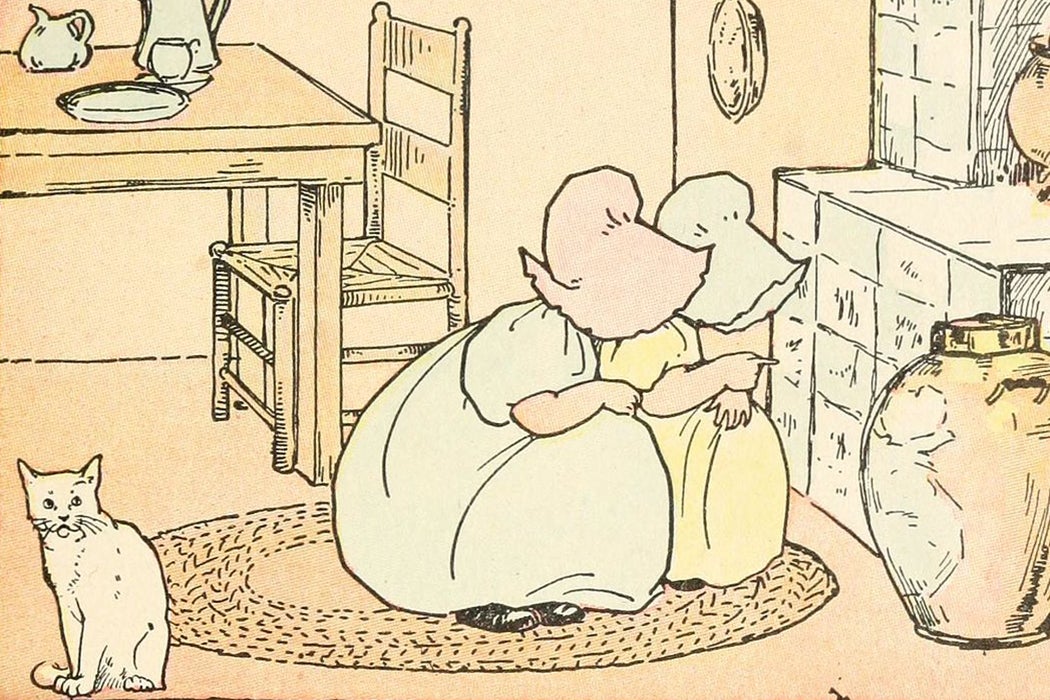The Sunbonnet Babies have become iconic—you know the ones, those illustrations of children in long dresses and sunbonnets, their faces obscured. You may know them from quilts. People at the turn of the century would have recognized them from a dizzying variety of crafts, ads, and books. But where did they come from? Moira F. Harris dives into the history of the Sunbonnet Babies and Bertha Corbett, a woman entrepreneur who turned an illustration into an empire.
Born in 1872, Corbett was the daughter of a sign painter. In the late 1890s, Corbett set up her own illustration studio in Minneapolis. But she could scarcely have realized that a few simple sunbonneted children would be her “ticket to success.”
There are different explanations for the Sunbonnet Babies’ genesis. As Harris explains, Corbett’s brother claimed his mother told Bertha to cover up some tricky faces with bonnets. Corbett had a different story, saying that the drawings were an answer to a friend’s challenge to convey emotion without a face.
Soon, Corbett had self-published a book featuring the Babies. They—along with male counterparts called the Overall Boys—were an instant success. Eventually, they decorated a small empire’s worth of merchandise. “The babies were a hit from the very beginning,” writes Harris; so much so that Corbett had to keep fifteen assistants on hand to color her new designs.
As Corbett’s Babies filtered onto school books, valentines, postcards, and china, the illustrator had to contend with a new business. The Babies’ success brought her to places like Chicago, where she gave “chalk talks”—lectures delivered while drawing. She collaborated with other artists, like Maud Pratt Crane, who played piano and whistled while Corbett talked. She also collaborated with Carrie Jacobs-Bond, a popular songwriter.
Corbett took inspiration from her friend R. F. Outcault, who invented the character Buster Brown. Outcault had a licensing firm and used his subjects on ads for different newspapers and magazines. Corbett followed suit and even created a comic strip for the Sunbonnet Babies.
Though the Sunbonnet Babies are perhaps best known for their appearance on quilts, the quilt square was not designed by Corbett. Though textile and quilting historians credit her with the invention of “Sunbonnet Sue,” the pattern evolved out of quilt squares based on, but not created by, Corbett. Harris traces their unlikely popularity over the generations, including on quilts where she is pregnant or gets electrocuted. The Sunbonnet Babies “thus evolved into adult women whose only link to their creator was the face-covering bonnet,” she writes.
Ultimately, Corbett was overshadowed by the Sunbonnet Babies. Though Harris notes that Corbett kept working for years, making paintings that were displayed in exhibitions, her creations loomed over her like a bonnet covering an anonymous face. She may be known only as the creator of cute stuff for kids, but Harris restores her to her true place as the innovative owner of an early merchandising empire.







